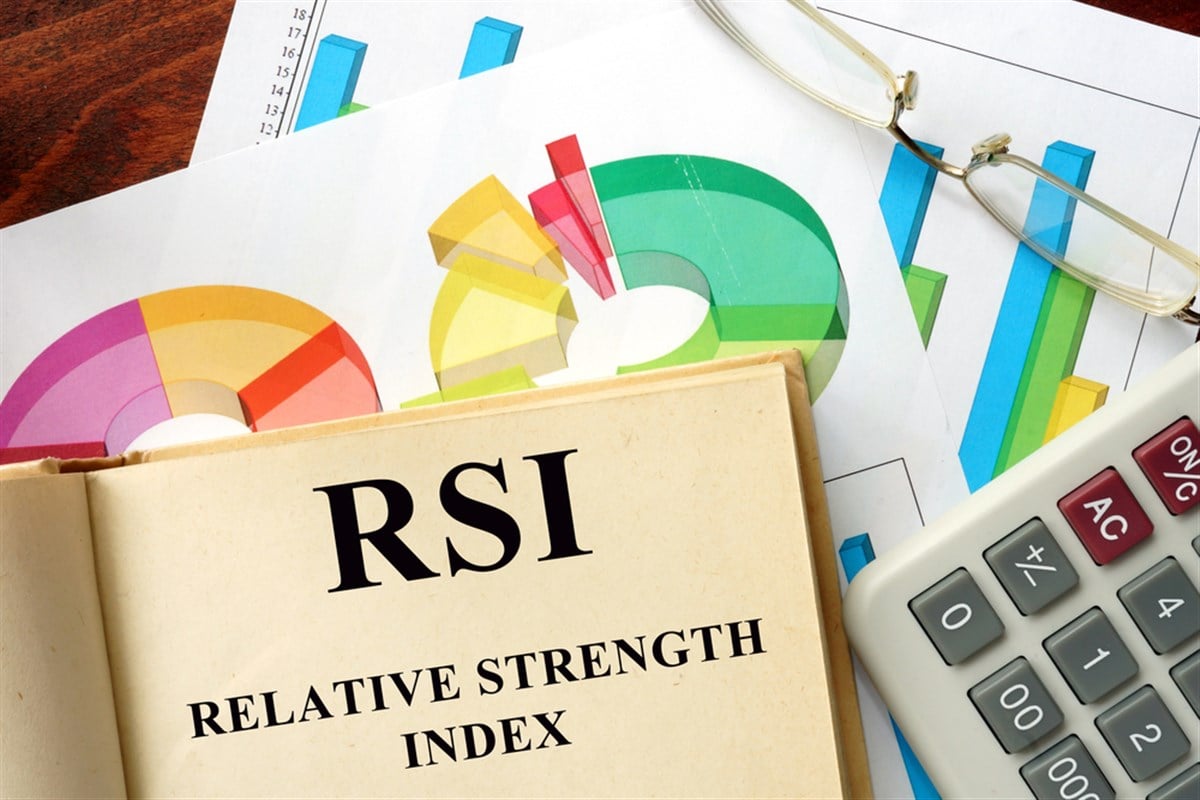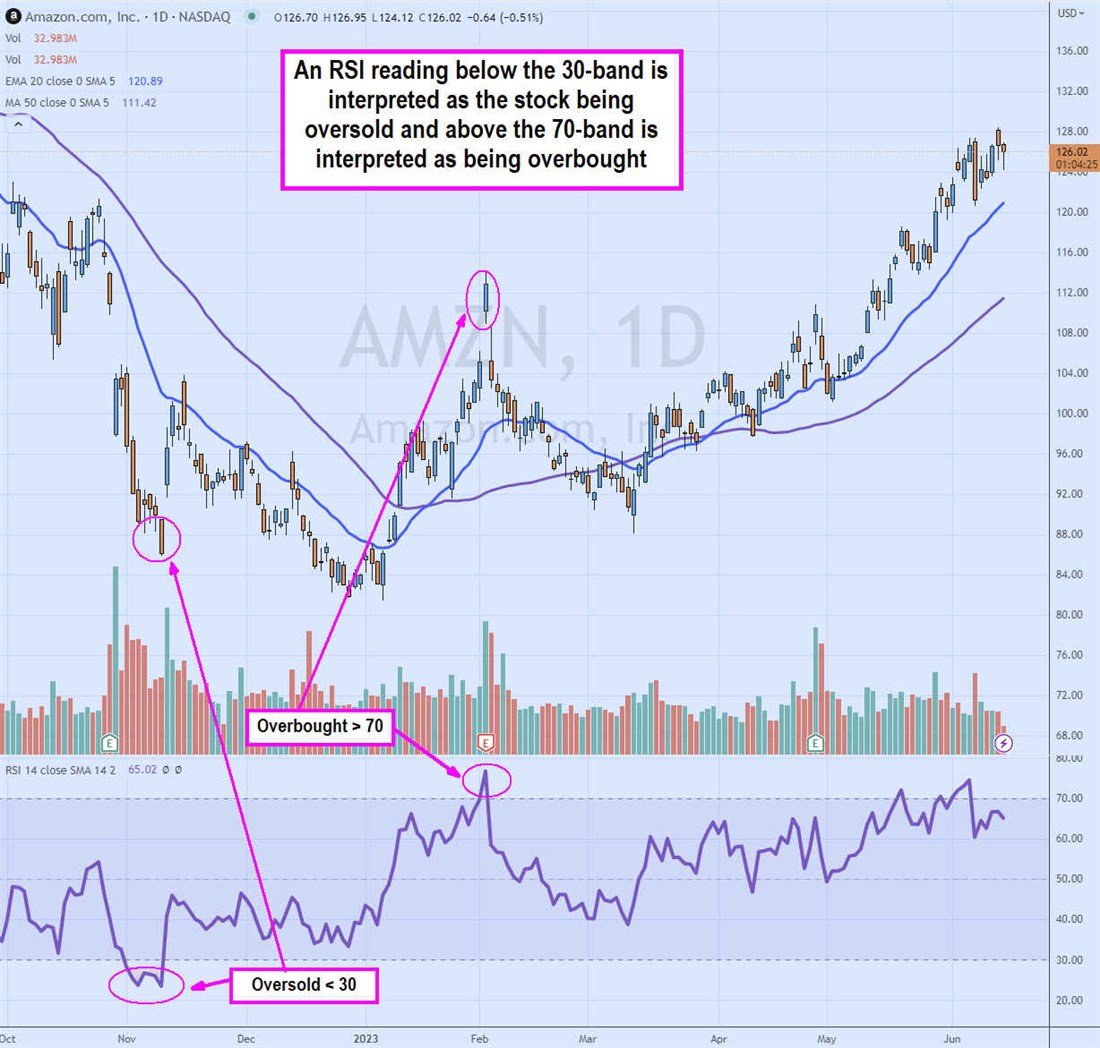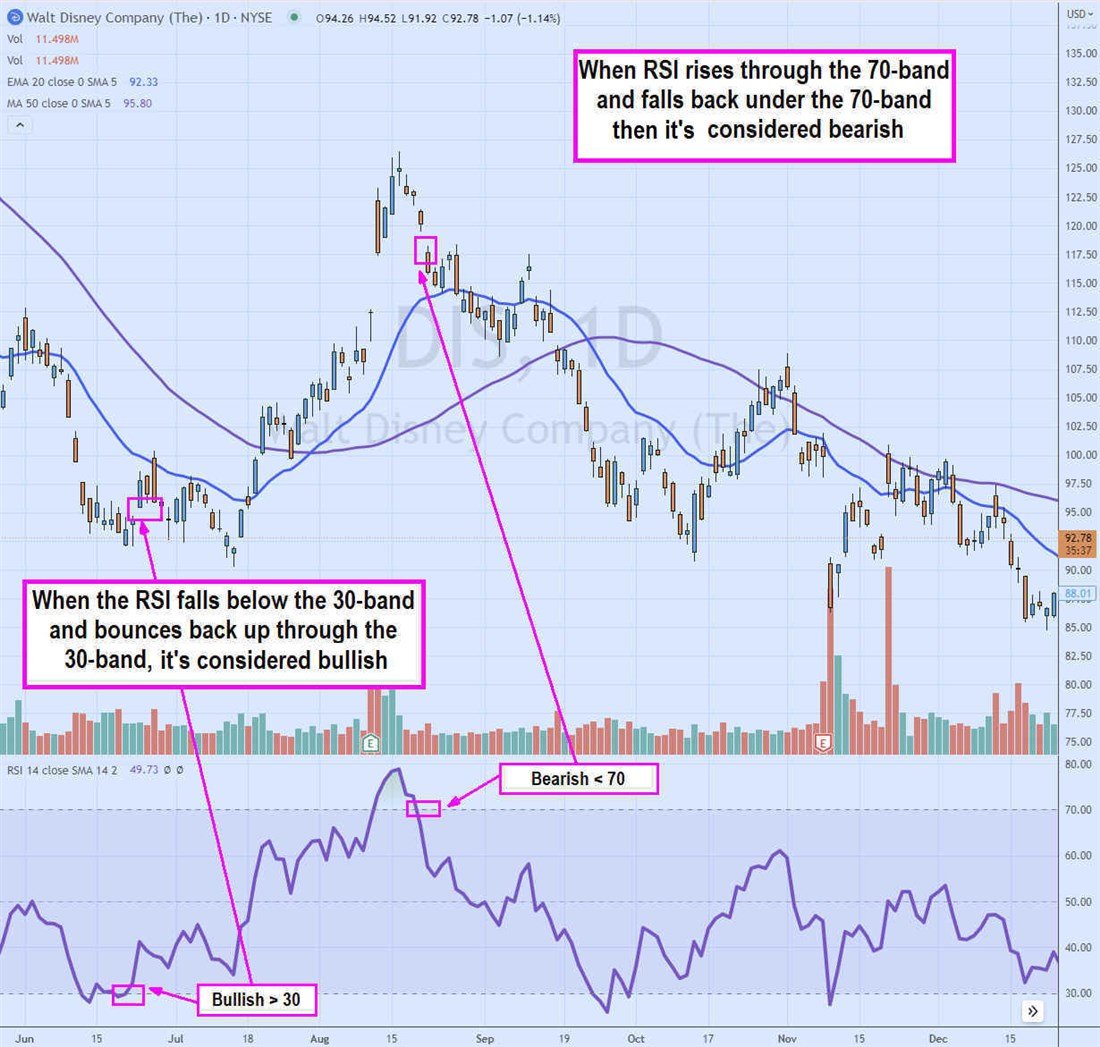
Key Points
- The relative strength index (RSI) was developed by J. Wells Wilder Jr. to be used as an oscillator to gauge overbought and oversold conditions for a stock.
- The 70-band and 30-band are the overbought and oversold ranges.
- RSI can be used to spot reversals at critical levels for potential trade entries and exits.
- 5 stocks we like better than Amazon.com
When doing technical analysis on a stock or reading a stock chart, traders may commonly use a candlestick chart, draw trendlines and add moving averages to determine price support and resistance levels. These are price indicators that help you find patterns in stock price action.
However, many traders believe it's essential to know how a price level is reached or overreached in addition to the price. A momentum indicator can add more context to the stock's price action.
The relative strength index (RSI) is a widely used momentum indicator that helps to gauge the momentum driving a stock price to overbought and oversold levels.
In this article, you will learn "What is RSI?" its purpose and how to use it to help you make more informed decisions regarding trading or investing in stocks.
Relative Strength Index, Defined
If you are wondering "What is a RSI?", here's a little background. A mechanical engineer turned real estate investor J. Welles Wilder Jr. is the father of the relative strength index, defining the RSI stocks meaning. He introduced the tool in the book "New Concepts in Technical Trading Systems," published in 1978. The RSI is a popular indicator often found on most charting software as it is a core indicator traders use. It determines "What is RSI in stocks?". It's presented as a momentum oscillator line that measures the velocity and change in price moves.
You can use it on charts, including bars, lines and candlesticks. The oscillator goes on a graph that ranges from 0 to 100 on the y-axis with time on the x-axis. The RSI moves or instead oscillates with the underlying stock price as it updates with each periodic candle close. It's essential to keep in mind that no indicator is 100%. Much like all indicators, the RSI used in technical analysis is theoretical and should be used with other indicators or methods to derive a complete picture of the price action for the underlying stock. Get started in reading stock charts with this simple starting guide on MarketBeat.
How the Relative Strength Index Works
The RSI provides a momentum reading on a stock using a scale from 0 to 100, labeled on the right side of the chart. The RSI oscillator will typically fluctuate up and down and alert you when it reaches certain levels. A reading below the 30-band is deemed oversold, and above the 70-band is an overbought level. The 14 period on the RSI means it averages the closing prices through 14 periods. If used on a daily candlestick chart, then it averages based on 14 days.
How to Calculate RSI
RSI calculates average green price closes relative to average red price closes and is reflected as a percentage. The RSI is calculated by dividing the average gains over X periods by the average losses over X periods. The formula is:
RSI = 100-100/(1+RS)
You can calculate the RSI by hand, but remember that charting software automates this process smoothly and efficiently. You can change the periods (X) from the 14 default setting. The RSI value is determined as a percentage of a number band (IE: 70-band) on its chart.
How to Interpret RSI
The most common use for the RSI indicator is to interpret certain conditions for a stock's price. RSI helps to provide context to a stock's price. The interpretations are the same, whether it's a technology stock or a small-cap stock. Remember that "oversold" and "overbought" readings describe the price condition, not the price's valuation.

Overbought Conditions
When the RSI oscillator rises through the 70-band, it's considered overbought. It's like an engine that is redlining. Remember that it's not interpreting the stock price as overbought because it's expensive. Still, instead, the velocity or momentum of the move up puts it in an overbought condition making it prone to see selling.
Oversold Conditions
The stock is considered oversold when the RSI oscillation falls below the 30-band. This doesn't mean the stock price is low. Excessive selling has caused the stock to be in an oversold condition.

Bullish Indicators
When the RSI reverses back up through the 30-band, it forms a bullish indication that traders may use as a buy trigger. Since the RSI was previously oversold under the 30-band, rising back up through the 30-band winds it up for a fresh bounce. Remember, a bounce through the 30-band doesn't mean the price is cheap. It means the momentum is turning bullish again.
Bearish Indicators
When the RSI falls below the 70-band, it is a bearish indication. Traders will often use this as a sell or a short sell signal. It indicates that the upside momentum has peaked and is exhausted as it reverses back down.
RSI Limitations
RSI has many limitations to be aware of. Just as with any chart indicator, it's not perfect. The most important thing to remember is that RSI readings gauge momentum, not valuation. This means a stock may have a daily RSI reading of 80, overbought at $39 on a Monday, and an RSI reading of 30, being oversold at $45 a month later. RSI doesn't reflect price or company valuations, just momentum.
Why Use RSI?
Now that you know what's RSI, let's look at why use an RSI. You may want to use it for the following reasons:
- Gauging overbought/oversold conditions: A primary reason to use RSI is to gauge a stock's current overbought or oversold condition. Being aware of an overbought condition can prevent you from chasing a too-high stock. An oversold condition on a stock may prevent you from panicking out of a stock by patiently waiting for a bounce to sell into.
- Spotting price reversals: When a stock's RSI dips below 30 or rises above 70, it's a wake-up call to stay alert for potential reversals when they reverse back through those levels. These can be opportunities to enter or exit a position.
- Spotting divergences: There are situations where the RSI may be a lead indicator in cases where a price divergence arises. This occurs when the RSI falls under the 70-band while the stock rises. The divergence between the RSI falling and stock price rising creates a divergence reversal setup as the stock usually joins the direction of the RSI. The same applies on the inverse. If the RSI bounces back up through the 30-band while the stock is still falling, it can be a divergence buy trigger to get into the position just before or as the stock starts to reverse back up.
- Finding trade entries and exits: Utilizing the 30-band and 70-band crossovers can help you determine entries and exits. Longs can look to buy the 30-band bounce and sell the 70-band test or pierce. Short sellers can short-sell the fallback under the 70-band and buy cover at the 30-band or below. Divergences enable traders to get a heads-up on the potential stock price reversal as the RSI reverses first, and the stock follows. Get a startup guide to trading stocks online at MarketBeat.
Linearity
The caliber of a solid chart indicator is the ability to be linear across any and all time frames. This means the RSI works on a five-minute candlestick chart just as well as a daily one. However, they will have different readings since the periods are different. This means a stock with a 70-band RSI reading on the daily chart can be oversold with a 30-band reading on a five-minute chart intraday. Linearity applies to stock sectors, industries and asset classes.
The RSI works on consumer discretionary stocks as well as consumer staples stocks. It works on blue-chip stocks or penny stocks. It's also important not to rely solely on a single indicator like the RSI regarding technical analysis. The RSI is a robust tool when used in conjunction with complementary indicators, strategies and a trading system.
FAQs
Here are some answers to frequently asked questions regarding the RSI, RSI value and RSI technical analysis.
What does RSI tell you?
What's RSI? The RSI is a momentum oscillator that tells when a stock is overbought or oversold. It gauges the momentum driving the stock price and whether it's reaching extreme levels. It can also alert you to reversal signals that can help you pinpoint entries and exits on your trades. RSI can be used in multiple time frames, making it useful for traders and investors.
What is the RSI 30 and 70?
RSI is measured on a chart between 0 and 100 on the Y-axis and time on the X-axis. The RSI meaning of a drop to 30 or below indicates the stock is in an oversold condition. The stock RSI meaning on the rise to 70 or higher, indicates an overbought condition. Be aware that just below a stock is under the 30-band doesn't mean it can't go lower. Many traders make the mistake of buying a stock when it falls to the 30-band as it continues to fall lower.
An oversold stock can continue to be oversold as shares drop. The wiser entry would be when the stock returns through the 30-band when the reversal has actually formed. The same applies to traders who short-sell a stock just as it hits the 70-band and continues to squeeze higher. Remember, just because a stock rises through the 70-band doesn't mean share prices can't increase.
What is a good RSI to buy stock?
It's essential not to rely solely on the RSI to determine where to buy a stock. You should use it with other indicators to form a solid buy or sell thesis. The good RSI buy signals form when the RSI oscillator rises back up through the 30-band. However, it is crucial to be aware of the trend of the stock as well as the context for the sell-off. The selling is often not related to the individual stock but because the whole market itself is selling off. For example, the S&P 500 index selling off on a high consumer price index (CPI) number will likely impact the RSI on your stocks to fall as well. Be sure to check the benchmark indexes just to be sure. Be aware that buying a stock with an RSI of 70 or higher has the risk of chasing a price that may exhaust and reverse as soon as you get in.
Before you consider Amazon.com, you'll want to hear this.
MarketBeat keeps track of Wall Street's top-rated and best performing research analysts and the stocks they recommend to their clients on a daily basis. MarketBeat has identified the five stocks that top analysts are quietly whispering to their clients to buy now before the broader market catches on... and Amazon.com wasn't on the list.
While Amazon.com currently has a "Moderate Buy" rating among analysts, top-rated analysts believe these five stocks are better buys.
View The Five Stocks Here
Click the link below and we'll send you MarketBeat's guide to investing in electric vehicle technologies (EV) and which EV stocks show the most promise.
Get This Free Report
